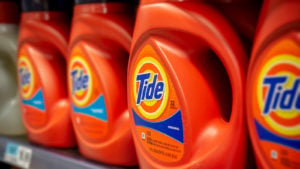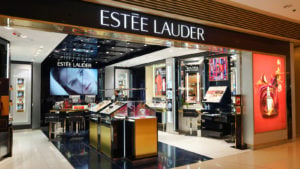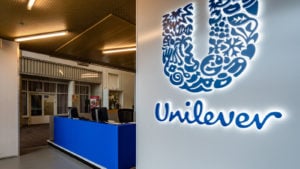InvestorPlace - Stock Market News, Stock Advice & Trading Tips
- These consumer stocks to buy for the long-haul have strong foundations and business models that make their products indispensable no matter the economy.
- Procter & Gamble (PG): A stable performer which ranks among Morgan Stanley’s 45 high-conviction picks.
- Home Depot (HD): A free-cash-flow generating machine that has proven to be a recession-resistant stock.
- Estee Lauder (EL): Beauty giant which has posted blow-out results in the past few years.
- Unilever (UL): Leading consumer stock with massive scale and cost advantages along with an enviable dividend profile.
- BJ’s Wholesale Club (BJ): Membership-based retailer that’s done significantly better than its peers in improving margins.
- PepsiCo (PEP): A dividend aristocrat that’s coming off an astonishing year.
- Walmart (WMT): Steady performer which should benefit from its sheer size in today’s inflationary environment.
Source: Shutterstock
The stock market has been incredibly volatile since the beginning of the year, as investors are rotating out of risky investments. Inflation rates are going through the roof as the Federal Reserve looks to control the erratic macro-economic environment through its hawkish policies. Nevertheless, consumers are spending money, so it’s prudent to load up on some of the best consumer stocks to buy.
Consumer stocks are great plays regardless of economic cycles. An effective consumer goods business has a robust balance sheet, fantastic margins and product inelasticity.
The Oracle Of Omaha, Warren Buffet, has been a huge fan of consumer stocks. Though he has his finger on the entire stock market’s pulse, some of the most obvious picks are among the consumer stocks.
Now, let’s look at seven of the most attractive consumer-oriented stocks to wager on.
| PG | Procter & Gamble | $145.04 |
| HD | Home Depot | $285.18 |
| EL | Estee Lauder | $229.13 |
| UL | Unilever | $44.20 |
| BJ | BJ’s Wholesale Club | $53.42 |
| PEP | PepsiCo | $163.65 |
| WMT | Walmart | $122.43 |
Procter & Gamble (PG)

Source: rblfmr/ShutterStock.com
Consumer-staples giant Procter & Gamble (NYSE:PG) needs no introduction, with it being one of the most powerful companies globally. Its been a stable performer and has consistently grown its cash flows. Moreover, it remains committed to rewarding its shareholders, growing dividend payouts for the past 65 years, yielding almost 3%.
Financial services company Morgan Stanley (NYSE:MS) had PG stock in its list of 45 high-conviction picks.
PG seems to be having little trouble marketing its premium offerings to customers. In its recently released third-quarter results, its revenues hit $19.4 billion, with its bottom line hanging tough despite inflationary pressures. PG has incredible pricing power, enabling it to navigate the toughest market conditions. Its results showed a 10% bump in organic sales on higher margins and volumes.
Furthermore, the retail giant has raised its full-year growth outlook by 100 basis points over its previous outlook. Near-term pressures will impact its bottom-line performance, but it has maintained its 3% to 6% earnings per share guidance.
Home Depot (HD)

Source: Cassiohabib / Shutterstock.com
Home Depot (NYSE:HD) is the top home-improvement retailer in the U.S. with an impressive track record of growing shareholder wealth. Over the past five years, returns for HD stockholders have risen over 92%, outpacing the S&P 500 returns. Moreover, its been a free-cash-flow generating machine.
Naturally, with higher inflation rates, the housing market is in a bit of a slump at this time, negatively impacting HD. However, the company management expects sales growth to be slightly positive and feels that “The broader housing environment continues to be supportive of home improvement.”
Consequently, you’d expect another year of healthy dividend expansion. The latest boost represented a 15% increment to $1.90 per quarter.
The company has been delivering higher dividends for multiple years, making it one of the leading income-oriented stocks on the market. Though sector tailwinds are receding, the management’s commitment to rewarding its shareholders remains stronger.
Estee Lauder (EL)

Source: Sorbis / Shutterstock.com
Estee Lauder (NYSE:EL) is one of the leading cosmetics retailers, with strong global franchises built on the most popular brands globally. The past couple of years has been tremendous in terms of revenue and margin expansion. However, the above-average growth rates are subsiding amidst the challenging geopolitical situation.
Nevertheless, its long-term case remains firmly in place, with incredible prospects ahead.
The beauty giant slashed its sales growth estimates in its most recent quarter from double-digit growth to 7%- 9% for 2022. Nevertheless, CEO Fabrizio Freda remains positive about its long-term positioning and navigating the current economic climate.
Lockdowns in China have weighed down its performance, but these short-term roadblocks will hardly impact its long-term performance. Moreover, it also announced another quarterly dividend of 60 cents, the second dividend payout since its pandemic-related pause.
It had an impressive record of growing dividend payouts and could potentially turn things up a notch once the macro-environment becomes more conducive.
Unilever (UL)

Source: BYonkruud / Shutterstock.com
Unilever (NYSE:UL) is a fast-moving multinational consumer goods company boasting a product base of over 300 brands. Its business has generated over $50 billion in revenue over the trailing 12 months with robust gross and net income margins.
Moreover, its stellar brand portfolio has made it a moat-worthy enterprise that can create tons of value for shareholders by focusing inwards. Its management has warned of record inflation levels ahead, but I expect the enterprise to weather the storm with its significant scale advantages.
UL has posted consistently growing revenues and earnings with potent cash flows. Moreover, it boasts an enviable balance sheet with fantastic liquidity metrics.
Furthermore, it has a decent track record of shareholder rewards, currently offering a dividend yield of over 4%.
BJ’s Wholesale Club (BJ)

Source: Helen89 / Shutterstock.com
BJ’s Wholesale Club (NYSE:BJ) is a membership-based warehouse retailer operating a similar business model to its competitor Costco (NASDAQ:COST). Both names got hammered on Wednesday along with the broader retail space and the overall markets.
Both companies have effectively managed costs and grown revenues at a steady pace. The inflationary effects, though, have negatively impacted margins for both companies.
BJ has done a much better job managing costs, with its gross margins over 5 percentage points higher than Costco. Also, it has generated above-average revenue growth in the past year and expects another relatively strong showing despite the challenges.
Additionally, it has supported its shareholders through share repurchases with a whopping cash flow balance. Last year, it repurchased 3.3 million shares totaling $179 million. Moreover, its shares have generated robust price returns offering tremendous capital appreciation.
PepsiCo (PEP)

Source: suriyachan / Shutterstock.com
PepsiCo (NASDAQ:PEP) is a leading snack and beverage giant which has become a long-time investor favorite. It has been a free-cash-flow machine, with a growing dividend payout and profitability metrics firmly in the green. It generated extraordinary shareholder returns in the past five years, with share-price gains above 50% and 7.4% dividend growth.
PepsiCo’s timeless appeal helped it post astonishing earnings and sales growth. It generated a whopping $79.5 billion in sales, equivalent to roughly 13% growth with an EBITDA margin of 18% in 2021. Its convenient food volumes rose 2.5%, while beverage volumes grew by 10%. Moreover, organic sales volumes came in 9.5% higher last year than in the year-ago period.
The inelasticity of its products is such that it can effectively pass on higher costs in the form of considerable price hikes without impacting demand. Hence, PepsiCo is an inflation-resistant stock that has stood the test of time.
Also, it has been a dividend aristocrat, yielding 2.6% and boasting dividend growth for roughly half a century.
Walmart (WMT)

Source: Jonathan Weiss / Shutterstock.com
Walmart (NYSE:WMT) has made investors rich over the years in its rise to become the largest global retailer. Its humongous size and scale make it one of the most popular consumer stocks. However, with the evolving retail landscape, the company faces headwinds that are likely to lead to margin compression.
The retail giant serves a diverse range of customers with very low price offerings. Though its business was hit hard by the pandemic, Walmart’s 2021 results show a resurgence, with comparable and eCommerce sales rising 11% from the prior-year period. Moreover, total sales, including rental and same-store sales, increased by 2.4%.
Though 2.4% may not seem high, it’s a sizeable increase given the sheer size of Walmart. Besides, it has been an incredible dividend stock offering above-average yields to stockholders.
On the date of publication, Muslim Farooque did not have (either directly or indirectly) any positions in the securities mentioned in this article. The opinions expressed in this article are those of the writer, subject to the InvestorPlace.com Publishing Guidelines.
The post 7 Consumer Stocks to Buy and Hold for Years appeared first on InvestorPlace.
The views and opinions expressed herein are the views and opinions of the author and do not necessarily reflect those of Nasdaq, Inc.


